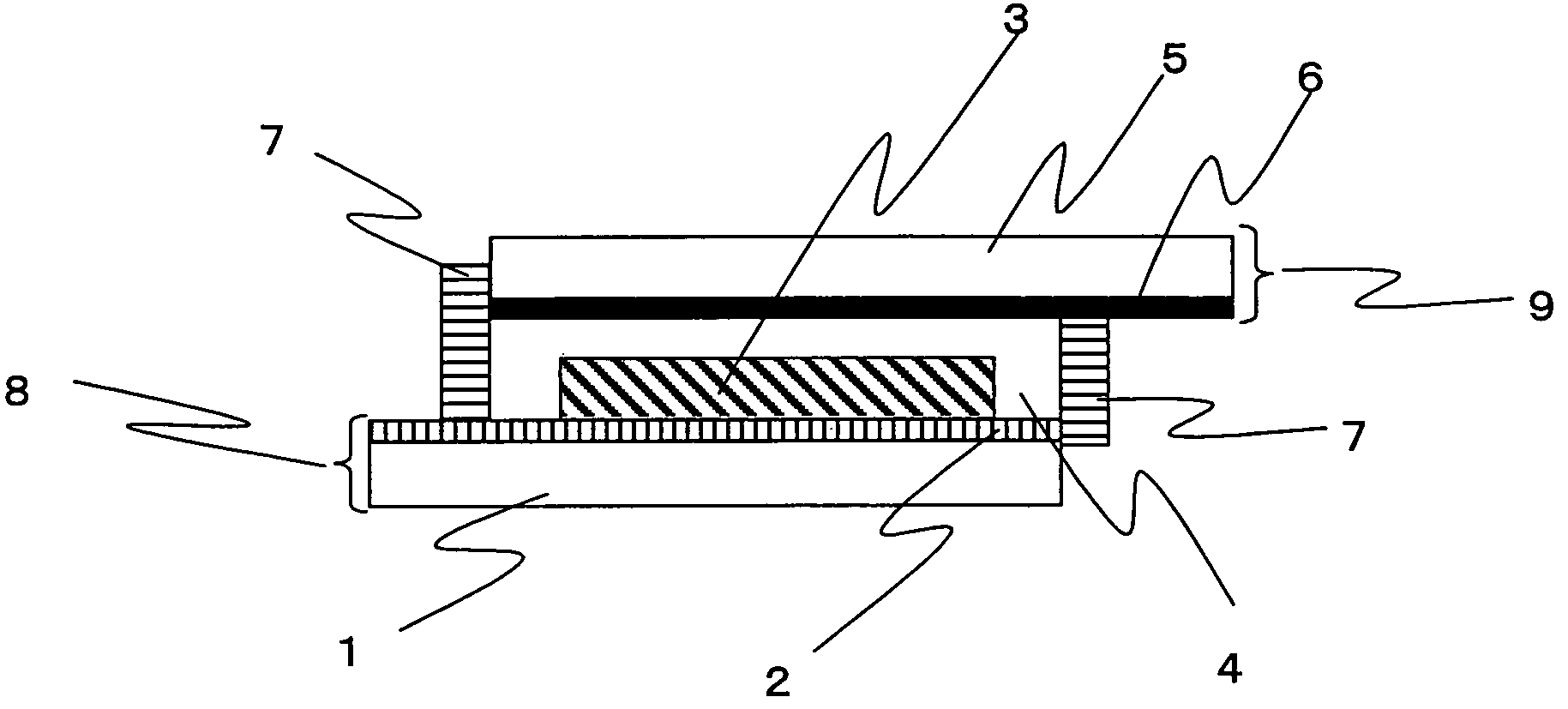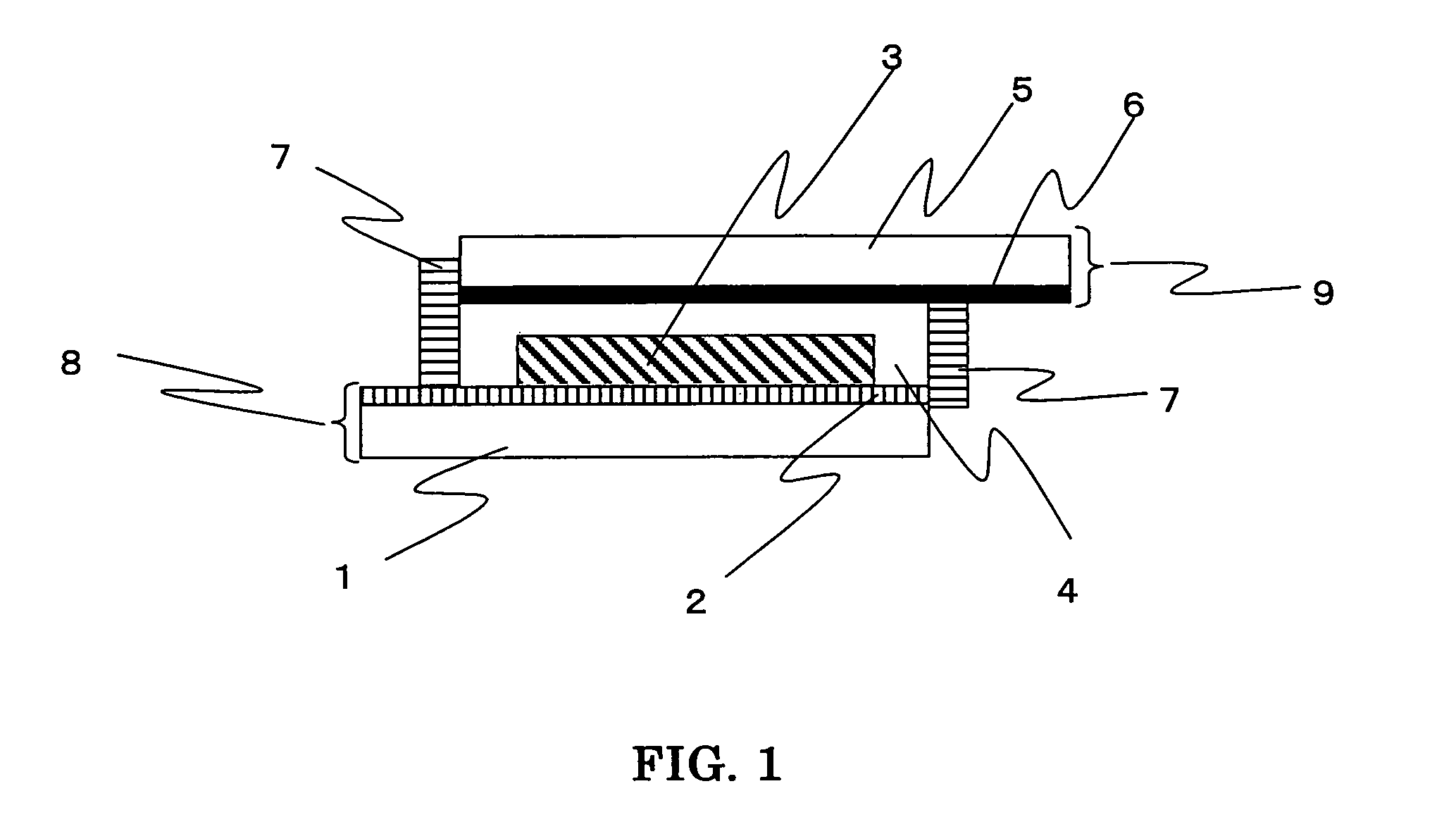Photosensitizing transition metal complex and its use for photovoltaic cell
a transition metal complex and photovoltaic cell technology, applied in the direction of ruthenium organic compounds, cell components, cadmium organic compounds, etc., to achieve the effect of improving the efficiency, durability and stability of dye sensitized nanocrystalline solar cells
- Summary
- Abstract
- Description
- Claims
- Application Information
AI Technical Summary
Benefits of technology
Problems solved by technology
Method used
Image
Examples
example 1
Preparation of 4,4′,4″-trimethoxycarbonyl-2,2′:6′,2″-terpyridine
[0064]This compound was prepared by an analogous procedure to that described in J. Am. Chem. Soc. 123 (2001) 1613.
example 2
Preparation of 4,4′-diethoxycarbonyl-4″(nonadecyl)-2,2′:6′,2″-terpyridine, a Compound of the Formula (II2)
[0065]
(a) Preparation of 4-nonadecylpyridine (1)
[0066]Into a 300-mL flask equipped with a mechanical stirrer, N2 inlet, pressure-equalizing addition funnel which is thermostated in oil bath, were added 14.8 g of sodium amide (0.38 mol) and 64.0 mL of 4-methylpyridine (61.1 g, 0.656 mol). The mixture was stirred under N2 for 1 h while a color change to deep red was observed. A 110-mL sample of n-octadecyl chloride (95.0 g; 0.33 mol) was added to the rapidly stirred reaction mixture over a period of 1.5 h. Shortly after addition was begun, the reaction mixture was warmed to 60° C. to prevent solidification and was subsequently stirred overnight at 100° C. The reaction mixture was cooled to room temperature, diluted with 200 mL of chloroform, washed three times with 200 mL of H2O, and reduced to dryness with the rotary evaporator. The resultant dark brown product was vacuum distill...
example 3
Preparation of 4,4′-diethoxycarbonyl-4″-(didodecylmethyl)-2,2′:6′,2″-terpyridine, a Compound of the Formula (II3)
[0077]
(a) Preparation of 4-(didodecylmethyl)pyridine (1)
[0078]A solution of butyllithium (1.6 M in hexane; 2.05 equiv.) was added to a solution of diisopropylamine (0.2 M; 2.1 equiv.) in dry ether at −15° C. After stirring for 30 min, freshly distilled 4-methylpyridine (1 eqiv.) was added dropwise. The resulting red solution was stirred for 15 min at −15° C. and then a solution of alkyl halide (1 M; 2.05 equiv.) in dry ether was added in one portion. The mixture was stirred overnight at room temperature. Ether was added and the reaction mixture was washed twice with 1 M NH4Cl solution, dried with Na2SO4 and evaporated to dryness. The product was purified by chromatography on Al2O3 (neutral), gradient-eluting with hexane and finally hexane / ether (5:1) to give the product in yield 70%. Anal. C30H55N: Calcd: C, 83.84; H, 12.90; N, 3.26. Found: C, 83.55; H, 12.84; N, 3.21. MS...
PUM
| Property | Measurement | Unit |
|---|---|---|
| particle diameter | aaaaa | aaaaa |
| particle diameter | aaaaa | aaaaa |
| specific surface area | aaaaa | aaaaa |
Abstract
Description
Claims
Application Information
 Login to View More
Login to View More - R&D
- Intellectual Property
- Life Sciences
- Materials
- Tech Scout
- Unparalleled Data Quality
- Higher Quality Content
- 60% Fewer Hallucinations
Browse by: Latest US Patents, China's latest patents, Technical Efficacy Thesaurus, Application Domain, Technology Topic, Popular Technical Reports.
© 2025 PatSnap. All rights reserved.Legal|Privacy policy|Modern Slavery Act Transparency Statement|Sitemap|About US| Contact US: help@patsnap.com



